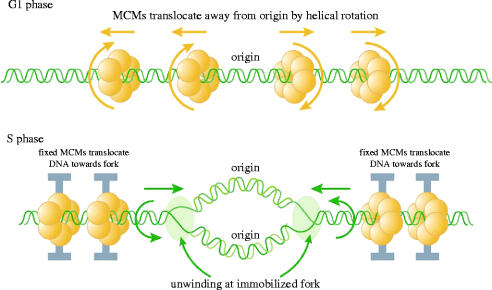Figure 4.
A hypothetical rotary pump model showing two stages in the distribution and function of MCM hexameric ATPase complexes. First, in G1 phase, MCM hexamers would move spirally along the helical groves of unreplicated DNA from their loading site at the origin of replication. Second, in S phase MCMs would become immobilized so that exactly the same rotary mechanism would move the DNA instead of the MCM proteins, resulting in translocation of DNA towards the replication forks. As DNA is twisted by fixed MCMs in S phase, it would become unwound at the distant replication fork. Reproduced with permission from Laskey & Madine (2003).

